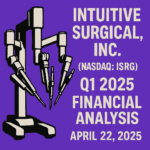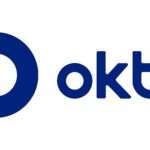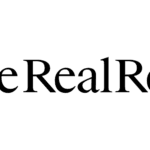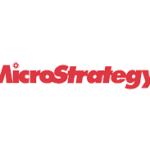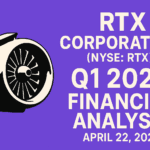SentinelOne, Inc. (S) Stock Analysis
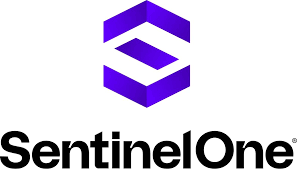
SentinelOne (NYSE: S) Stock Analysis
Sector/Industry: Cybersecurity (Endpoint & Identity Security)
Analysis Date: March 25, 2025
1. Company Overview
SentinelOne is a cybersecurity company specializing in endpoint security and extended detection and response (XDR). Its platform leverages AI-driven threat detection and automated response to protect against malware, ransomware, and other advanced threats.
- Core Products: Singularity Platform for endpoint protection, XDR, identity security, and cloud workload protection.
- Customer Base: Enterprise and mid-market customers across industries (finance, healthcare, government, etc.).
- Competitive Landscape: SentinelOne competes with CrowdStrike, Microsoft (Defender), Palo Alto Networks, and other endpoint/XDR vendors.
2. Financial Performance
a. Revenue & Growth
- TTM Revenue: $770.12 million
- Revenue Growth (YoY): ~16.84%
Analysis:
SentinelOne continues to expand its customer base and upsell existing accounts, though growth has moderated from the very high rates of prior years. As a fast-growing cybersecurity player, double-digit revenue growth remains robust compared to broader software markets.
b. Profitability
- TTM Net Income: -$289.64 million (Net loss)
- TTM EPS: -$0.94
- Profit Margin: -37.61%
Analysis:
Like many growth-stage cybersecurity companies, SentinelOne invests heavily in R&D and sales, leading to negative GAAP net income. However, the net loss has narrowed somewhat, reflecting the company’s focus on improving operating leverage over time.
c. Margins
- Gross Margin (TTM): 73.63%
- Operating Margin (TTM): -42.33%
- EBITDA Margin (TTM): -37.77%
Analysis:
A gross margin above 70% is common for a SaaS-based security vendor, though the negative operating margin (-42.33%) indicates substantial reinvestment in marketing, R&D, and global expansion.
d. Free Cash Flow
- Operating Cash Flow (TTM): $30.95 million
- Capital Expenditures (TTM): -$1.85 million
- Free Cash Flow (TTM): $29.09 million
- FCF Margin (TTM): ~3.78%
Analysis:
Despite GAAP losses, SentinelOne is free cash flow positive at around $29 million TTM. This highlights strong recurring revenue, efficient billing cycles, and minimal capital expenditure needs for a cloud-based security solution.
3. Balance Sheet& Liquidity
- Cash & Short-Term Investments: $660.26 million
- Total Debt: $20.10 million
- Net Cash Position: $640.16 million or about $1.99 per share
- Equity (Book Value): $1.64 billion
- Working Capital: $383.51 million
- Debt / Equity: 0.01
Analysis:
SentinelOne has a very clean balance sheet with a significant net cash position ($640M). The extremely low debt/equity ratio (0.01) indicates minimal leverage, providing a solid foundation for further R&D and market expansion.
4. Valuation
- PE Ratio (TTM): n/a (negative earnings)
- Forward PE Ratio: ~31.45
- PS Ratio (TTM): 8.01
- EV/Sales (TTM): 7.26
- P/FCF Ratio (TTM): ~214 (high due to relatively small FCF base)
Analysis:
As a growth-oriented cybersecurity name, SentinelOne trades at a premium based on revenue multiples (PS ~8, EV/Sales ~7.3). The forward PE of ~31 (if it achieves near-term profitability) suggests investors expect strong growth and margin improvements. The P/FCF ratio is high, partly because FCF remains modest.
5. Market Performance
- 52-Week Price Change: -29.06%
- Beta (5Y): 0.78
Analysis:
The stock is down ~29% in the past year, reflecting both broader market volatility in tech/growth stocks and concerns about SentinelOne’s path to profitability. A beta under 1 suggests less volatility than the broader market, though the stock has had notable price swings tied to earnings updates and sector sentiment.
6. Risks & Considerations
1. Competition: The endpoint/XDR market is competitive, featuring well-funded peers like CrowdStrike and Palo Alto Networks.
2. Path to Profitability: Although free cash flow turned positive, GAAP net losses persist. The timeline for consistent GAAP profitability remains uncertain.
3. Execution on Growth: SentinelOne’s high growth is slowing, so continued ARR expansion and large enterprise adoption are critical.
4. Security & Reputation: A serious breach or product failure could damage SentinelOne’s reputation in the cybersecurity domain.
5. Macro Environment: Tightening enterprise budgets may lengthen sales cycles or hamper expansions.
7. Conclusion
Pros:
- Strong Growth in ARR: Ongoing demand for advanced endpoint and identity security solutions.
- High Gross Margin & Emerging FCF: 73% gross margin and positive free cash flow highlight a scalable SaaS model.
- Solid Balance Sheet: Over $600M net cash and negligible debt, supporting further R&D or acquisitions.
Cons:
- Negative GAAP Earnings: Ongoing net losses underscore the cost of rapid expansion and stiff competition.
- Competitive Pressures: Rival solutions from CrowdStrike, Microsoft, etc. require sustained R&D and marketing investment.
- Valuation: Elevated multiples (EV/Sales ~7.3) hinge on robust revenue growth and margin improvement continuing.
Final Note:
SentinelOne’s leadership in AI-driven endpoint/XDR solutions, combined with strong net cash and growing free cash flow, make it a notable cybersecurity growth play. Investors should weigh the high valuation, negative GAAP profits, and competitive environment against the company’s potential to scale further in a rapidly expanding security market.
Disclaimer:
This analysis is for informational purposes and does not constitute financial advice. All investments involve risk, including possible loss of principal. Conduct your own due diligence or consult a licensed professional before making any investment decisions.
